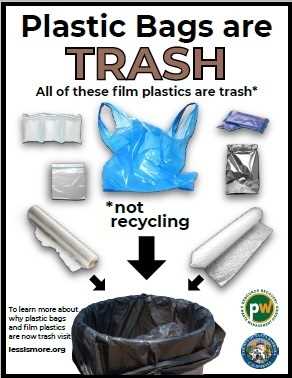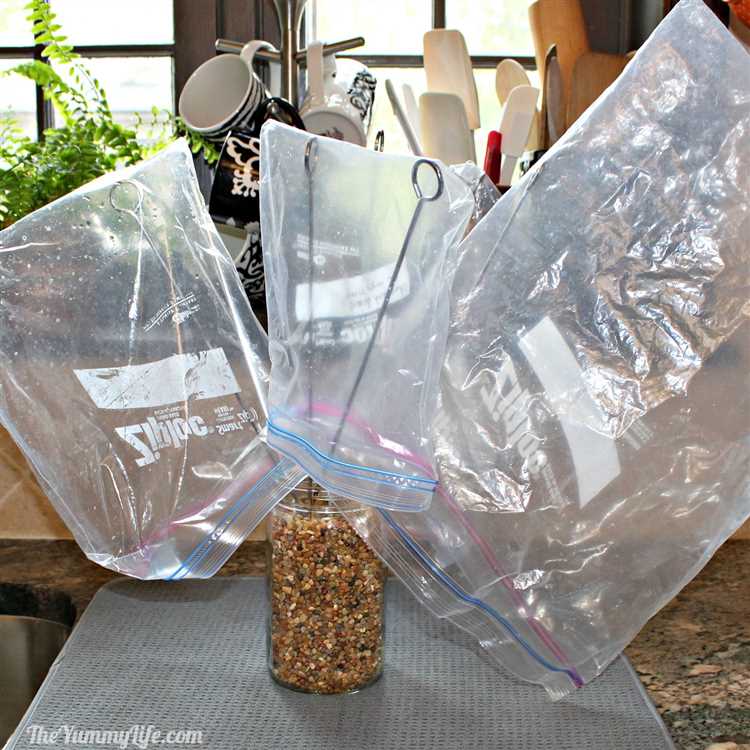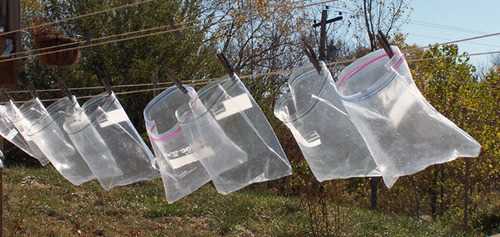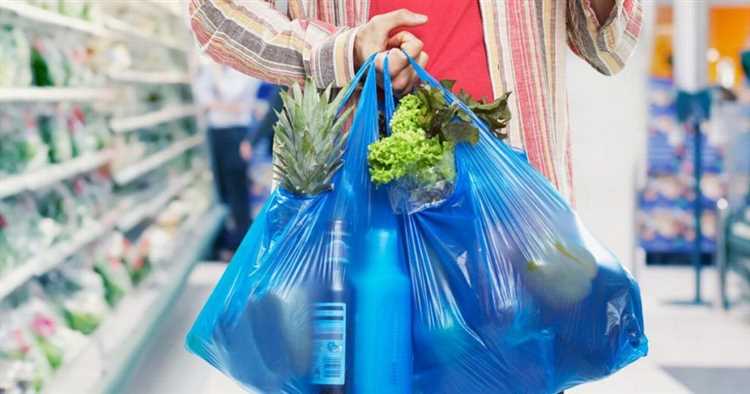
Plastic bags have become an essential part of our daily lives. We use them to carry groceries, pack lunches, and store various items. However, the question of how many times you can reuse a plastic bag is one that often arises.
Plastic bags are designed for single-use, but many people wonder if they can be reused multiple times to reduce waste. The answer to this question depends on several factors, including the type of plastic, the condition of the bag, and how it is used.
The most common type of plastic bag is made from high-density polyethylene (HDPE), which is a durable and flexible material. These bags can typically be reused multiple times if they are in good condition. However, it is important to note that reusing plastic bags can lead to wear and tear, making them less effective at carrying heavy items or liquids.
It is also important to consider the cleanliness of the bag when reusing it. If the bag has been used to carry food or other items that may contaminate it, it is best to dispose of it and use a new one. Reusing dirty bags can lead to the growth of bacteria or cause cross-contamination.
- The Lifespan of a Plastic Bag
- Environmental Impact of Plastic Bags
- 1. Pollution
- 2. Resource Depletion
- The Average Lifespan of a Plastic Bag
- The Manufacturing Process
- The Usage Period
- Disposal and Decomposition
- Factors that Affect the Lifespan of Plastic Bags
- Quality of the bag
- Frequency of use
- Type of usage
- Storage conditions
- Reusing Plastic Bags: How Many Times Can You Do It?
- Why Reuse Plastic Bags?
- How Many Times Can You Reuse a Plastic Bag?
- Recycling Plastic Bags: Is it Worth It?
- Alternatives to Plastic Bags
- 1. Reusable Cloth Bags
- 2. Paper Bags
- Question-answer:
- Is it safe to reuse plastic bags?
- How many times can you reuse a plastic bag?
- What are some ways to reuse plastic bags?
- Is it better to reuse plastic bags or use reusable bags?
The Lifespan of a Plastic Bag
Plastic bags have a significantly shorter lifespan compared to other materials. They are typically designed for single-use and are not meant to last long. However, the actual lifespan of a plastic bag depends on various factors including the quality of the bag, frequency of use, and proper care.
On average, a plastic bag can be reused multiple times before it starts to degrade. Some bags are more durable and can withstand more uses, while others may break or tear after just a couple of uses. It is important to note that reusing plastic bags can help extend their lifespan and reduce the overall environmental impact.
However, even when handled with care and reused, plastic bags will eventually wear out and become unusable. The thin plastic material can easily be damaged, especially if it is subjected to heavy loads or rough handling. Over time, the bag may develop holes or tears, rendering it useless for carrying items.
Once a plastic bag becomes damaged or worn out, it is important to properly dispose of it. Plastic bags are not easily recyclable and can cause harm to wildlife if they end up in the environment. Many stores and recycling centers have designated collection bins for plastic bags, where they can be recycled or properly disposed of.
In conclusion, the lifespan of a plastic bag can vary depending on several factors, but it is generally short. With proper care and reuse, a plastic bag can be used multiple times before it becomes unusable. However, it is crucial to dispose of plastic bags properly once they are no longer usable to minimize their impact on the environment.
Environmental Impact of Plastic Bags
Plastic bags have become a significant environmental issue due to their widespread use and disposal. The production and disposal process of plastic bags contribute to various negative impacts on the environment.
1. Pollution
Plastic bags are a major source of pollution, particularly in marine environments. When plastic bags are not properly disposed of, they can end up in rivers, lakes, and oceans, causing harm to marine life. Animals can mistake these bags for food, leading to injury or death.
2. Resource Depletion

The production of plastic bags requires the use of fossil fuels, primarily oil and natural gas. These resources are non-renewable and their extraction and processing contribute to environmental degradation.
| Environmental Impact | Description |
|---|---|
| Landfill Space | Plastic bags take up valuable landfill space and contribute to the growing issue of overcrowded landfills. Their slow decomposition rate means they can remain in landfills for hundreds of years. |
| Carbon Footprint | The production, transportation, and disposal of plastic bags contribute to greenhouse gas emissions, adding to global warming and climate change. |
| Wildlife Habitat Destruction | The extraction of fossil fuels used in plastic bag production often involves habitat destruction, leading to the displacement and endangerment of wildlife. |
Considering these environmental impacts, it is crucial to reduce the consumption of plastic bags and find sustainable alternatives. Reusing bags and opting for reusable alternatives like cloth or paper bags can significantly reduce the negative impact on the environment.
The Average Lifespan of a Plastic Bag
Plastic bags are a common item used in our daily lives for carrying groceries, shopping, or other small items. However, their lifespan is often short-lived, leading to a significant environmental impact.
The Manufacturing Process
The average lifespan of a plastic bag starts from the moment it is manufactured. The process involves extracting raw materials, such as natural gas or crude oil, which are then processed into small plastic pellets. These pellets are melted down and molded into thin sheets, which are then cut and sealed to form a plastic bag.
Although the manufacturing process itself is relatively quick, it requires a substantial amount of energy and resources. This contributes to the overall environmental impact of plastic bags.
The Usage Period
Once a plastic bag is produced, its average lifespan depends on how it is used. Often, plastic bags are designed for single-use, intended to carry items from a store to a home and then discarded. This means that the lifespan of a plastic bag can be as short as a few minutes or hours.
However, some individuals choose to reuse plastic bags multiple times. By reusing them for various purposes, such as for storing items or as trash bags, their lifespan can be extended. However, the number of times a plastic bag can be reused is limited due to wear and tear.
Disposal and Decomposition

Once a plastic bag reaches the end of its lifespan, the disposal process begins. Unfortunately, plastic bags are not biodegradable and can take hundreds of years to decompose. This means that once discarded, they can persist in the environment for a long time, contributing to pollution and posing risks to wildlife.
Efforts to reduce the environmental impact of plastic bags include promoting the use of reusable bags or switching to biodegradable alternatives. These measures can help minimize the average lifespan of plastic bags and reduce their overall impact on the environment.
Factors that Affect the Lifespan of Plastic Bags
Plastic bags are widely used for various purposes and can have different lifespans depending on several factors. These factors include:
Quality of the bag

The quality of the plastic bag plays a significant role in determining its lifespan. Bags made from thicker, more durable plastic are generally able to withstand repeated use more effectively than thinner, flimsier bags. High-quality bags with reinforced handles and sturdy construction tend to last longer.
Frequency of use
The number of times a plastic bag is reused also affects its lifespan. Bags that are only used a few times before being discarded will naturally have a shorter lifespan compared to bags that are used multiple times. The more times a bag is reused, the higher the chances of wear and tear, ultimately leading to its deterioration.
Type of usage
The purpose for which a plastic bag is used can also impact its lifespan. Bags used for heavy items or liquids are more likely to experience strain and damage compared to bags used for light items. Carrying sharp or heavy objects can cause the bag to tear or stretch, reducing its lifespan.
Storage conditions
The way in which plastic bags are stored also affects their lifespan. Bags that are stored in a cool, dry place are less prone to degradation. Exposure to extreme temperatures, sunlight, and humidity can accelerate the breakdown of plastic, making the bag more susceptible to tearing or breaking.
Considering these factors can help you determine how many times a plastic bag can be reused before it needs to be replaced. By choosing high-quality bags, using them responsibly, and storing them properly, you can prolong their lifespan and reduce plastic waste.
Reusing Plastic Bags: How Many Times Can You Do It?
Plastic bags are a common item that we use on a daily basis. They are convenient for carrying groceries, packing lunches, and storing various items. However, there is growing concern about the environmental impact of plastic bags, particularly the single-use ones. Many people wonder if it is possible to reuse plastic bags to reduce waste and lessen the negative effects on the environment.
Why Reuse Plastic Bags?
Reusing plastic bags is a simple and effective way to reduce waste. By using them more than once, we can prolong their life and prevent them from ending up in landfills or polluting our oceans. Additionally, it can help save resources and energy that are used in the production of new bags.
How Many Times Can You Reuse a Plastic Bag?
The number of times a plastic bag can be reused depends on several factors, such as its quality, thickness, and the type of items it carries. While some plastic bags may tear or become damaged after a few uses, others can withstand multiple uses without any issues.
Generally, lightweight single-use plastic bags are not designed for reuse and may not hold up well after a couple of uses. On the other hand, thicker and more durable bags, such as those made from high-density polyethylene (HDPE) or polypropylene (PP), can be reused multiple times.
It is important to visually inspect the bag before each reuse to ensure there are no holes or tears that could compromise its strength. If a bag is damaged or shows signs of wear and tear, it is best to recycle it properly and replace it with a new one.
Using reusable grocery bags or switching to more sustainable alternatives like cloth bags or tote bags is another great option to reduce plastic bag consumption.
Remember, the goal is to minimize the use of plastic bags and find eco-friendly alternatives whenever possible.
Recycling Plastic Bags: Is it Worth It?
Plastic bags are a common item that most people use every day. They are convenient for carrying groceries, packing lunches, and many other purposes. However, the environmental impact of plastic bags is a major concern. The question arises, should we recycle plastic bags or avoid using them altogether?
Recycling plastic bags can help reduce their impact on the environment. When plastic bags are recycled, they can be made into new products such as plastic lumber, park benches, and reusable shopping bags. This reduces the need for virgin plastic and helps conserve natural resources. Recycling plastic bags also helps to prevent them from ending up in landfills and polluting our oceans, where they can pose a threat to marine life.
However, recycling plastic bags is not without its challenges. Plastic bags are lightweight and can easily become tangled in recycling equipment, leading to costly repairs and downtime. Many recycling facilities do not accept plastic bags, so they often end up in the regular trash. Even when plastic bags are collected for recycling, the process can require a significant amount of energy and resources.
Reducing the use of plastic bags is another option to consider. Investing in reusable shopping bags made from durable materials like canvas or woven polypropylene can help reduce the need for plastic bags. These reusable bags can be used repeatedly, eliminating the need for single-use plastic bags. Some stores also offer incentives for customers to bring their own bags, further encouraging the use of reusable options.
In conclusion, while recycling plastic bags can help reduce their environmental impact, it is essential to consider the challenges and limitations of the recycling process. Ultimately, reducing the use of plastic bags and opting for reusable alternatives is a more sustainable choice. By making small changes in our daily lives, we can contribute to a greener and healthier planet.
Alternatives to Plastic Bags
Plastic bags are a major contributor to pollution and environmental damage, with their production and disposal causing significant harm to our planet. Fortunately, there are plenty of alternatives to plastic bags that can help reduce this impact and promote sustainable living.
1. Reusable Cloth Bags
One of the most popular alternatives to plastic bags is using reusable cloth bags. These bags are made from natural or recycled materials such as cotton or canvas, and they can be used many times over. They are durable, washable, and often have a larger capacity than plastic bags, making them a convenient and eco-friendly choice.
2. Paper Bags
Paper bags are another common alternative to plastic bags. They are biodegradable and can be easily recycled, making them a better option for the environment. However, it is important to note that the production of paper bags still requires significant energy and resources, so reusing them whenever possible is recommended.
When considering alternatives to plastic bags, it’s important to choose options that align with your values and lifestyle. Whether it’s using cloth bags, paper bags, or other environmentally friendly options, every small decision can make a big difference in reducing plastic waste and protecting our planet.
Question-answer:
Is it safe to reuse plastic bags?
Yes, it is generally safe to reuse plastic bags. However, it is important to make sure they are clean and free from any chemicals or contaminants before reusing them.
How many times can you reuse a plastic bag?
The number of times a plastic bag can be reused depends on its quality and condition. On average, a plastic bag can be reused anywhere from 2-5 times before it starts to deteriorate or tear.
What are some ways to reuse plastic bags?
There are many ways to reuse plastic bags. Some ideas include using them for trash can liners, storing and organizing items, as packing material, or even as a makeshift rain cover.
Is it better to reuse plastic bags or use reusable bags?
Using reusable bags is generally more environmentally friendly than reusing plastic bags. Reusable bags are typically made from more durable materials and can be used many times over, reducing the demand for single-use plastic bags.